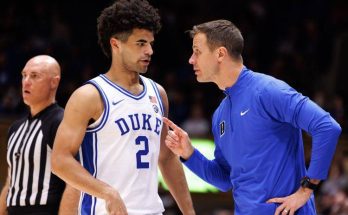The rivalry between the University of Michigan Wolverines and the Ohio State University Buckeyes is widely regarded as the greatest in college football history. This storied contest, simply known as “The Game,” has been played annually since 1918, and its roots trace back to their first meeting in 1897. But calling it just a football game is a disservice—it is a cultural event, a historical symbol, and a deeply emotional contest that defines seasons, careers, and lives. The two teams don’t just play football; they fight for pride, tradition, and regional supremacy. Every November, regardless of rankings or records, the nation tunes in, and the stakes are always immense.
This rivalry goes beyond wins and losses. It’s rooted in real history, dating back to the 19th-century border dispute between Michigan and Ohio known as the Toledo War. That historical tension planted seeds of regional animosity that were later cultivated on the football field. Over time, this annual game became more than just a sporting event—it became a battle of identities. Ohio State sees Michigan as elitist and arrogant; Michigan sees Ohio State as brash and hostile. These stereotypes fuel the passion of the fanbases and ensure that every meeting carries the weight of generations.
The stadiums themselves are cathedrals to this rivalry. The Wolverines play at Michigan Stadium, “The Big House,” in Ann Arbor, which holds over 107,000 fans. The Buckeyes host their games at Ohio Stadium, “The Horseshoe,” in Columbus, which seats more than 101,000. These are two of the largest venues in the country, and when Michigan and Ohio State face off, they are filled to capacity, with emotions running as high as the stakes. It’s not uncommon to see fans reduced to tears—of joy or heartbreak—depending on the outcome. This game has the unique ability to unify and divide families, towns, and entire states.
The rivalry has featured some of the most iconic moments in college football history. The 1950 Snow Bowl, played in blizzard conditions, was a surreal contest where both teams combined for 45 punts and very few offensive plays. Michigan won 9–3 despite not securing a single first down. The 1969 matchup, where first-year Michigan coach Bo Schembechler led the Wolverines to an upset over Woody Hayes’ top-ranked Buckeyes, ignited what would become known as the “Ten-Year War”—a stretch from 1969 to 1978 in which the two teams dominated the Big Ten and college football at large. That period turned “The Game” into a defining event of the season, and many of those contests determined who would play in the Rose Bowl and contend for a national championship.
Few rivalries can match the sheer number of moments that have left lasting impressions on college football fans. In 1991, Michigan’s Desmond Howard returned a punt 93 yards for a touchdown against the Buckeyes, then struck the Heisman pose in the end zone, an image etched forever in sports history. In 1997, Charles Woodson’s brilliant two-way performance against Ohio State helped solidify his case for the Heisman Trophy. In 2006, the teams met as #1 and #2 in the country for the first time ever, with Ohio State winning a thrilling 42–39 shootout in Columbus. That game was watched by over 21 million people, making it the most viewed regular-season college football game in decades.
The rivalry is not just about what happens on the field. The week leading up to the game is an event in itself. In Columbus, every “M” is crossed out or taped over, and the mere mention of “Michigan” is taboo. In Ann Arbor, Ohio State gear is frowned upon, and Buckeye symbols are nowhere to be seen. Former players from both programs talk about the game with reverence. NFL legends, Heisman winners, and national champions all trace their most emotional football memories back to the third Saturday in November. Coaches and players are judged not just by their records but by how they performed in this singular matchup.
Coaching legacies are often defined by The Game. Bo Schembechler and Woody Hayes are two of the most iconic figures in college football, and their personal rivalry became the stuff of legend. Hayes once said that he wouldn’t even stop to get gas in Michigan, famously declaring that he would rather push his car across the state line than spend a dime in enemy territory. That kind of passion made the rivalry what it is. In the modern era, coaches like Urban Meyer, Jim Harbaugh, and Ryan Day have all had their careers shaped by what happened in these games. Harbaugh, for example, faced enormous pressure until he finally broke through in 2021, leading Michigan to a dominant win over Ohio State. That victory changed the narrative not only for him but for the entire Michigan program.
Over the past few years, the rivalry has seen another power shift. After years of Ohio State dominance—winning 17 of 19 matchups from 2001 to 2019—Michigan has surged. The Wolverines have now won four straight games from 2021 through 2024, flipping the momentum and igniting a resurgence in Ann Arbor. Those wins have included physical dominance in the trenches and strategic coaching triumphs, showing that Michigan has once again become a national powerhouse. For Ohio State, the recent losses have caused soul-searching and scrutiny. Despite multiple College Football Playoff appearances and continued success, losing to Michigan now overshadows all else. That’s the power of this rivalry—it doesn’t just define a season; it defines a program.
The importance of The Game isn’t just anecdotal—it’s statistical. Since the 1930s, Michigan and Ohio State have accounted for more than 75 Big Ten titles combined. In more than 40 seasons, the winner of this game has gone on to win or share the Big Ten title. In an era where the College Football Playoff has changed the way teams are evaluated, this one game still has the ability to make or break championship aspirations. Fans on both sides argue that a national title means less if it doesn’t include a win over the rival. For players, it’s the first thing they are asked about. For coaches, it’s the game that determines job security. No other college football game has that kind of influence.
Beyond football, the rivalry permeates culture, business, and everyday life. Michigan and Ohio residents frequently cross paths in shared regions, especially in Toledo, which sits right on the border. The game affects apparel sales, alumni donations, and even university applications. National brands run special campaigns built around The Game. Local bars, restaurants, and retailers plan their entire fall calendars around this one weekend. It’s a phenomenon that goes beyond the box score. Even casual sports fans know what “Michigan–Ohio State” means—it’s not just a game; it’s an event that demands attention.
What makes this rivalry unique among all others is the combination of tradition, impact, and mutual excellence. Alabama and Auburn have a passionate rivalry, but it has not always determined national outcomes. USC and Notre Dame have history, but the stakes vary depending on the year. The Iron Bowl, Red River Showdown, and Army–Navy each have strong cases, but none combine the yearly consequences, iconic moments, and generational consistency of Michigan vs. Ohio State. This rivalry has remained relevant through world wars, social upheaval, and college football reformations. No matter what changes in the sport—conference realignment, playoff expansion, NIL deals—this game remains central.
There is also a unique respect embedded within the rivalry. While the two schools are fierce enemies on the field, there have been countless examples of shared reverence. When Bo Schembechler passed away the day before the 2006 game, Ohio State fans held a candlelight vigil outside Michigan’s hotel. That kind of sportsmanship, in the midst of such fierce competition, speaks volumes. These programs understand that their greatness is linked. Michigan needs Ohio State, and Ohio State needs Michigan. Their success is made sweeter by the presence of a worthy rival.
As college football continues to evolve, with new playoff formats and conference changes altering the sport’s landscape, one thing remains constant: The Game. It still captures the attention of the entire country, still causes heart rates to spike, still changes lives. Analysts, historians, players, and fans continue to declare it the greatest rivalry in college football—and they’re right. Because at its core, this game is not just about touchdowns or trophies. It’s about legacy, identity, and the unyielding belief that one game can mean everything.

